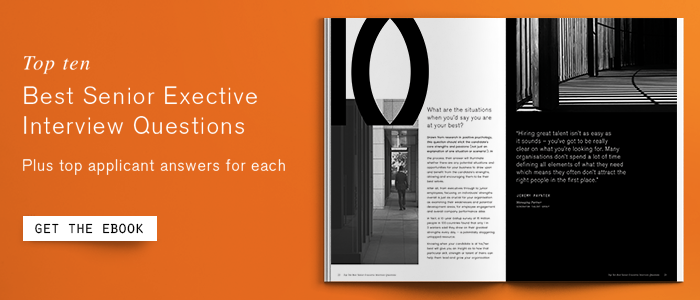19th October 2016
Is It Time To Challenge How You’re Measuring The Quality Of Your Hire?
When it comes to talent acquisition, do you choose to focus on measures of cost or measures of quality?
A while back we introduced the Recruitment Type Indicator as a way of helping organisations to frame their recruitment strategy. It certainly kicked off plenty of discussion around the focus of talent acquisition metrics and measures, and over these last months, a number of clients and people in our network have had an ‘A-Ha’ moment as they came to realise the emphasis of their recruitment measurement was on cost and efficiency as opposed to quality, when it needed to be other way around.
The key insight:
If your organisation has plenty of the best people queuing up to join, then you can prioritise measures of cost and efficiency, because you always have a choice of the best. However, if you aren’t a first choice employer and talent is important to you, then you need to prioritise measuring the quality of hire.
As one potential client said, “Hmm, that means essentially our current recruitment strategy is to recruit average quality people as quickly and cheaply as we can.”
So, how can you be sure that the time and money you spend on recruiting is getting you the best results?
I’d like to quickly note that we are not suggesting that anyone ignore metrics related to cost and efficiency e.g. Time to Fill (TTF), Source of Applicant (SoA), Cost to Acquire (CTA), Cost Per Hire (CPH) etc. We need these as well, and most of these and more can be generated from your HRIS or Applicant Tracking System. However, in measuring of cost and efficiency you are measuring the process and not the outcome, unless of course the outcome you want is an efficient process not quality hires. Therefore, what we are saying is that for many organisations measures related to the quality of people hired should be prioritised.
“Hiring for quality is fundamentally different than just filling positions. To do it right, you have to track performance metrics like quality of hire and return on investment.” (Lou Adler, CEO of The Adler Group).
Here are ten measures to help you assess the quality of your hires and the hiring process altogether that you can start using today:
1. Number of Hires that meet your Benchmark
Organisations need to have benchmarks for talent for all sorts of reasons but recruitment is a biggie. Typical recruitment benchmarks vary but most are concerned with things like education, corporate pedigree, aptitude in key areas, specific experiences, etc. So, the first step is to be clear about your benchmark and the second is to begin to measure the number of people you hire who meet that benchmark.
2. Quality of Talent Pool
There are a lot of advantages to developing and maintaining a talent pool; access to a constant flow of potential job candidates, reduced advertising costs and time saved in recruitment screening. But for talent pools to be effective and not just a wish list, they require a high level of upkeep in order to ensure candidates are relevant to the organisation’s needs.
It’s essential to take the time out to re-examine your candidate community. That means reassessing CVs to make sure they’re still current and relevant to your workplace, and meet the benchmark you require. A talent pool is useless if it doesn’t reflect the goals of your business as well as the quality of candidates you would hire ― both now and in the future.
3. Source of Hire
Most talent acquisition best practices focus on how to find top quality candidates at the start of the hiring process. However, reflecting on where your actual hires are coming from may tell a different story.
To help determine which recruitment sources are most deserving of your time and energy, consider measuring the number of total applicants that are being sourced from each active recruitment platform. Also think about tracking the channels where candidates first learned about the vacancy (eg. online advertisements, company website or social media). With this information, you can identify those recruitment platforms and channels where the greatest return on investments can be achieved.
4. Speed to Productivity
Once the perfect candidate has been hired, there’s inevitably a period of time required to get them settled into the role. But how long should you wait for a new hire to become a productive staff member?
The speed to productivity measure can be used any time after hiring new talent (so as long as it’s measured at consistent points) to keep track of, say, the total time spent in training new employees, or the efficiency of your company induction process.
5. Turnover of New Hires
When a talented person jumps ship early it can really hurt the business. Apart from the recruitment, training and administration costs involved with finding a replacement, executive turnover can cause a negative chain reaction by disrupting other workers, dampening staff morale, and reducing the efficiency of business operations overall.
To some extent staff turnover is unavoidable (in fact, Australian companies lose between 20 – 50% of their employee base annually), but an employee’s first 12 months in the workplace should be monitored closely, not only to ensure that the right decision was made, but that your business is able to retain its’ best people.
6. Promotion Rates
How many of your hires get promoted (to the next level of the hierarchy) within two years? If your emphasis is on bringing in high quality talent then a proportion of those people should have the right combination of talent, ambition and savvy to move up. It won’t be 100% but there should be an optimal number.
7. Hiring Manager Satisfaction
How satisfied are your hiring managers with the people they’ve hired? We would recommend surveying at 6 and 12 month intervals using a Net Promoter Score (NPS) styled metric.
8. New Employee Satisfaction
How satisfied are new employees 12 months into the role? Like the Manager Satisfaction measure, a NPS type measure would work well here.
9. Newly Hired vs. Recently Departed
Make a list of the people who have been hired into roles and juxtapose that with those who left the organisation from that role. How do your new hires stack up? Has there been a net increase in talent?
10. Return on Investment
Perhaps the most important metric of all. There are several views you can take to establish your ROI. For example, one way would be to calculate the value of creating a high quality talent pool. In this case you can compare the average cost per hire and/or average time to hire with the number of people you place from your pool (those that come at no cost and are available when you need them). Other perspectives include measuring how long high quality candidates stay with the organisation and dividing that by the hiring cost and comparing that with the average cost of average hires.
Next Steps
To ensure top quality executives from the get go, make sure your recruitment process is flawless. At Generator Talent, we’re experienced in sharpening client recruitment strategies and in matching client opportunities with the right candidates. Whether it’s market mapping, talent pooling or a full end to end executive search, we’re happy to get involved.
After connecting with the best executive talent, it’s vital that you ask the right questions (and get the right answers) to secure a quality leader for your team. Our guide to the Top 10 Executive Interview Questions is a useful resource for optimising your recruitment process. Click the image below to get your free copy.
Categories: Acquiring Talent




